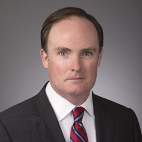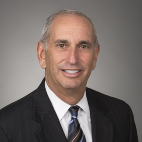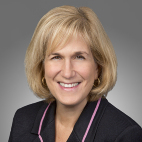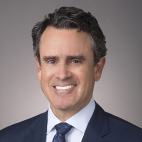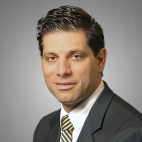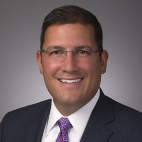Keep up to date with Akin Gump Strauss Hauer & Feld's COVID-19 Resource Centre
Key Points
- On March 18, 2020, President Trump signed FFCRA, imposing new paid and unpaid sick leave requirements on employers with less than 500 employees.
- The federal government is providing tax credits equal to 100 percent of the FFCRA-mandated paid leave wages to offset the costs to employers.
- On March 18, 2020, Governor Cuomo signed New York’s Paid
Sick Time Plan, imposing new paid and unpaid sick leave
requirements on all employers in the state.
As quarantine and self-isolation measures to limit the spread of the novel coronavirus (COVID-19) increase, the federal and New York State governments are now requiring many employers to provide sick leave to impacted employees. The federal government’s Families First Coronavirus Response Act (FFCRA) contains two different laws, the Emergency Paid Sick Leave Act and the Emergency Family and Medical Leave Expansion Act. Employers will receive tax credits intended to offset the costs of additional leave required by the FFCRA. This week New York immediately enacted the New York Paid Sick Time Plan covering all employers in the state. We are seeing and anticipating similar initiatives in other states as well.
The Emergency Paid Sick Leave Act – Effective no later than April 2, 2020
The Emergency Paid Sick Leave Act (EPSLA) requires covered employers with less than 500 employees to provide paid sick leave to all employees who seek paid leave when:
- The employee is ordered into quarantine or isolation by a public official.
- The employee has been advised to self-quarantine or isolate by a health care provider.
- The employee is experiencing symptoms of COVID-19 and is seeking a medical diagnosis.
- The employee is caring for an individual who is subject to a quarantine or isolation order or has been advised to self-quarantine or isolate by a health care provider.
- The employee is caring for a child because their school or daycare has been closed.
- The employee is experiencing any other substantially similar condition specified by the Secretary of Health and Human Services (HHS).
Full-time employees are entitled to 80 hours of paid leave, and part-time employees are entitled to the number of hours they work on average over a two-week period.
Employees who take leave for reasons 1-3 must be paid at the employee’s regular rate of pay, subject to a maximum of $511 per day, or $5,110 in the aggregate. Employees who take leave for reasons 4-6 must be paid at two-thirds their regular rate of pay, subject to a maximum of $200 per day, or $2,000 in the aggregate. The government tax credit is subject to the same daily and aggregate caps as the sick leave benefits.
Employers cannot require employees to use other accrued leave, such as vacation or sick time, before taking EPSLA leave. Small employers with fewer than 50 employees may be exempted from providing paid sick leave benefits to employees who request leave to care for a child because their school or daycare has been closed, if providing such benefits would jeopardize the viability of the business.
Employers are required to distribute a notice of the requirements of the EPSLA to employees, which the Secretary of Labor will make publicly available.
The Emergency Family and Medical Leave Expansion Act – Effective no later than April 2, 2020
The Emergency Family and Medical Leave Expansion Act (“FMLA Expansion”) requires most employers with less than 500 employees to provide employees with at least 30 calendar days of service to take up to 12 weeks of leave under the Family and Medical Leave Act (FMLA) to care for a child under the age of 18 if their school or place of care has been closed, or the child care provider of such child is unavailable, due to a COVID-19 related emergency, as follows:
- The first 10 days of this leave may be unpaid. An employee may substitute any accrued vacation leave, personal leave, or medical or sick leave for unpaid leave, including EPSLA leave, but cannot be required to do so.
- After 10 days, the employee is entitled to be paid two-thirds their regular rate of pay for the number of hours they would otherwise be normally scheduled to work, up to a maximum of $200 per day or $10,000 in the aggregate. The government tax credit is subject to the same caps per employee.
- For employees with variable schedules, employers must take into account the average number of hours they were scheduled to work in the previous six months or the amount of hours they were expected to work upon hiring, depending on length of employment.
As with the EPSLA childcare component, employers with fewer than 50 employees may be exempt from providing these benefits if doing so would jeopardize the viability of the business.
NY Paid Sick Time Plan – Effective March 18, 2020
New York’s Paid Sick Time Plan requires covered employers to provide paid and/or unpaid leave to each employee who is subject to a mandatory or precautionary order of quarantine or isolation issued by the state of New York or any governmental entity duly authorized to issue such order due to COVID-19 as follows:
- Employers with 10 or fewer employees and less than $1 million in revenue in the previous tax year must provide their employees with unpaid sick leave until the termination of any order of quarantine or isolation.
- Employers with 10 or fewer employees and $1 million or more in revenue in the previous tax year, and all employers with 11-99 employees must provide at least five days of paid sick leave and unpaid leave until the termination of any order of quarantine or isolation.
- Employers with 100 or more employees must provide at least 14 days of paid sick leave during any order of quarantine or isolation.
Sick leave provided under this new law cannot run concurrently with certain other leave benefits, including paid sick leave under New York City law, paid family leave and disability benefits. However, the benefits under this law must run concurrently with any federal COVID-19 benefits. To the extent employers are also covered under the FFCRA, their employees can receive benefits in an amount equal to the difference between sick leave available under the NY Paid Sick Time Plan and the sick leave available under the FFCRA.
In addition, employers must restore employees who take sick leave to the same job position they held prior to leave, with the same pay and other terms and conditions of employment. Employers also are prohibited from discriminating or retaliating against any employee for taking such leave.
Finally, an employer does not have to provide paid sick leave benefits to an employee who is (i) subject to an order of quarantine or isolation after personal travel to a country for which the CDC has a level 2 or 3 travel health notice, or (ii) asymptomatic or has not yet been diagnosed with any medical condition and is physically able to work through remote access or similar means.
The Commissioner of Labor is expected to adopt regulations and/or issue guidance, which may include standards for the use, payment and employee eligibility of sick leave under the new law.
Next Steps
Employers should prepare to address an influx of leave requests as COVID-19 continues to spread and most states, including New York, remain under orders to quarantine and self-isolate. Employers should look for a model notice of the EPSLA requirements from the Secretary of Labor. New York employers should also remain on the lookout for regulations and/or guidance regarding the new state leave law.


